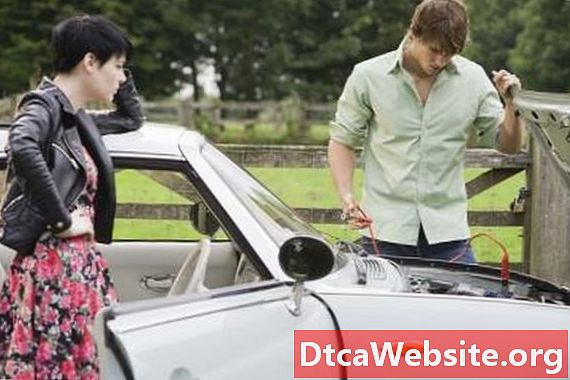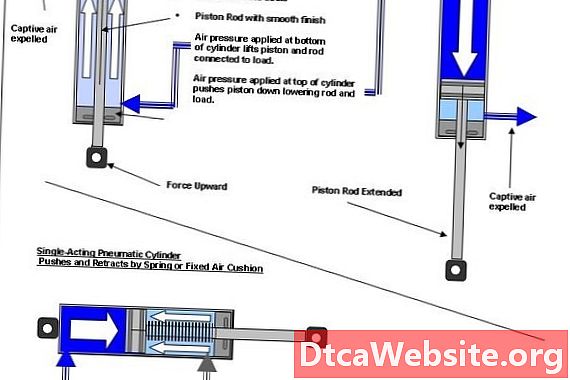
Contenu

The battery cables are the first and last components in every electrical circuit in a vehicle, with power leaving the battery along one cable and returning along the other. Bad connections cause a loss of voltage, increased current and poor performance. Really bad connections completely prevent the flow of electricity causing all the electrical systems to cease working. Fixing bad connections on a battery cable is a straightforward task.
Step 1
Remove the cover from the battery box, if one is present, and place it in a safe place. Wipe loose dirt and moisture from the battery using an old rag. Move loose wires out of the way to gain access to the battery terminals.
Step 2
Ascertain whether the vehicle has a positive or negative grounding system. Most modern vehicles are negatively grounded -- the black (negative) wire goes from the battery to the vehicle chassis. Older vehicles may have a positive ground. If you are uncertain, consult the vehicle manufacturers manual.
Step 3
Disconnect the battery cable that goes to ground. Use an adjustable wrench, a screwdriver, or simply unscrew the plastic knob depending on the system used on your vehicle. Place the disconnected cable where it cannot accidentally fall back onto the battery terminal. For example, if the vehicle has a negative ground, disconnect the negative cable. When the grounding cable has been disconnected, and only when it has been disconnected, undo the other cable. Place the end somewhere safe where it cannot fall back on to the battery.
Step 4
Fit a battery terminal cleaner over one of the terminals and rotate it to remove corrosion, debris and oxidized metal. Continue rotating until the terminal is shining. Alternatively, use a combination of a wire brush and emery paper to clean the terminal until it shines. Repeat the process on the other terminal.
Step 5
Clean each of the battery cable clamps, one at a time. Scrub each terminal clamp thoroughly using a wire brush and emery paper until it is clean and shiny. Wipe it clean with an old rag and smear petroleum jelly all over the metal surfaces.
Step 6
Wipe any debris from the top of the battery, then re-connect whichever cable was disconnected last. So, for a negative ground vehicle, reconnect the positive cable first. Ensure that the terminal clamp sits as far down on the terminal as possible, then tighten it. Tighten it until you cannot move the clamp by hand. Do not over tighten it as you could damage the battery terminal.
Step 7
Reconnect the remaining cable, again pushing the clamp fully down on the battery terminal and tightening it until you cannot move it by hand.
Smear a liberal coating of petroleum jelly over all the battery cable and terminal connections.
Tip
- Check battery cables every week for tightness and signs of corrosion. Regular maintenance will prevent cables working loose and help to maintain the electrical system in good condition.
Warning
- Remove all rings, watches and necklaces made of metal. Accidental contact between metallic jewelry and the battery may result in a short circuit and severe injury. A fully charged automotive battery can weld a ring to an adjacent part of the vehicle.
Items you will need
- Old rag
- Adjustable wrench
- Screwdriver
- Battery terminal cleaner
- Wire brush
- Emery cloth
- Petroleum jelly


